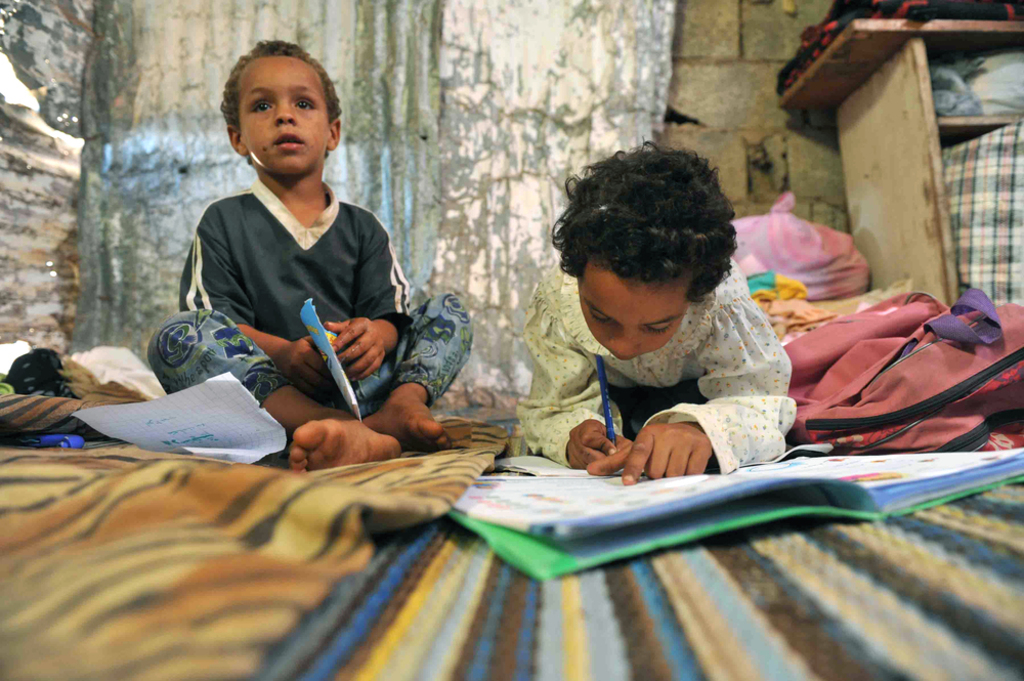
The Moroccan public education system spans the primary, secondary and tertiary levels. After Morocco gained independence in 1956, this system was instrumental in producing an urban elite that was fluent in both Arabic and French and helped build the country’s institutions. Indeed, it is often stated that the golden age of Morocco’s public schools was between 1956 and the 1970s. However, a serious structural crisis had set in by the end of the 1970s. This was first manifested in the high number of dropouts, with seven out of ten children leaving school before the baccalaureate, little or no training geared towards employment and an increasing number of private schools benefitting the rich.
In the decades that followed, the public education system became a laboratory for a series of failed ‘emergency plans’. For example, according to a survey conducted by the Ministry of Education in 2012, only 30 out of 100 primary school children go on to pass the baccalaureate. Of the remaining 70 per cent, 50 per cent leave early for reasons including ‘not liking school’, ‘parents deciding their children’s schooling’ or ‘transportation problems’. The crisis continues to this day, with the majority of Moroccans only having access to public education.
The causes of the crisis are multiple and complex. First, the state does not consider public education a priority: the budget allocated to this sector is far from being sufficient. Even officials think that the state finances the rich. Rachid Belmokhtar, the former minister of public education, said, “The state pays a dirham for a child from a rich background [20 per cent of pupils], [but] it pays only 0.7 dirhams for the 20 per cent of children from the poorest backgrounds. In high school, the gap is even more glaring. The ratio is 9 dirhams for the first category against 1 dirham only for the second.”
Successive governments undertook reforms in 1975, 1985 and 2000-2009, with limited success. The 1975 reforms aimed to build new schools and provide teacher training, especially in primary education. The 1985 reforms, meanwhile, aimed to meet the requirements of the structural adjustment programme by enhancing private education and vocational training as well as limiting foreign scholarships. The 1985 reforms also allowed the establishment of academies and the reorganization of the exam system in secondary education. However, the results were poor, leading King Hassan II to create a Special Commission for Education and Training (COSEF) in 1999. The commission recognized education and training as a national priority for 2000-2009 and declared an annual 5 per cent increase in public financial resources. Other goals included achieving universal enrollment of 4- to 16-year-olds by 2007 and, importantly, improving the quality and content of educational programmes to meet the needs of the labour market.
Despite these efforts, which have involved vast sums of money, public education continues to decline. Illiteracy rates are alarmingly high: around 50 per cent for women and 30 per cent for men. At the same time, investment in public infrastructure remains low and qualified human resources are scarce. This is hampering the potential for economic development, especially in rural areas, and contributing to the country’s bigger problems, notably poverty and religious extremism.
Poverty tends to be greater in rural rather than urban areas and more associated with women than men. For example, in November 2017, at least 17 people, 15 of them women, were killed and more than 40 were injured, some of them seriously, in a stampede for food stamps in Sidi Boualam, Essaouira province. In 1998, 16.3 per cent of Moroccans were categorized as ‘poor’. Although this percentage had fallen by half to 8.9 per cent in 2007 and was further reduced to 4.2 per cent in 2014, over 18 per cent of Moroccans in rural areas are considered ‘poor’.
In an effort to curb religious extremism and enhance open-mindedness, King Mohammed VI called for the “simplification and modernization of compulsory Islamic education in state schools”. This call is increasingly being supported by Morocco’s intellectuals, who believe that inclusive and multi-dimensional approaches to religious teaching are the only guarantee of a lasting solution to rising religious extremism.
Education is the foundation of any country’s development. Morocco’s ongoing failure to address the chronic shortcomings of its public education system is serving to widen social disparities and diminish the opportunities available to the children who need them most.

